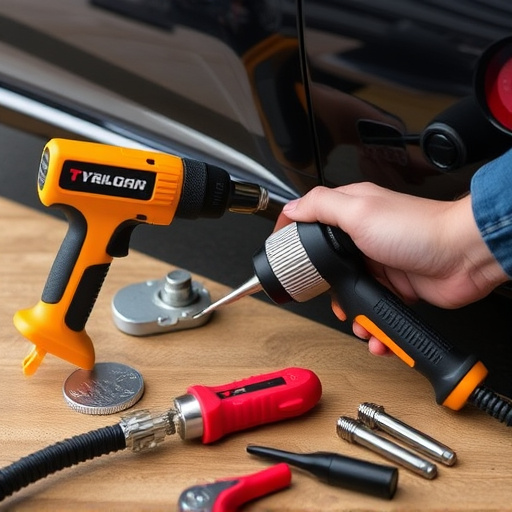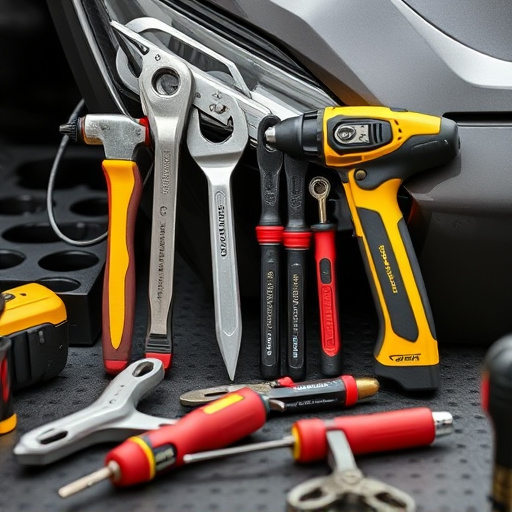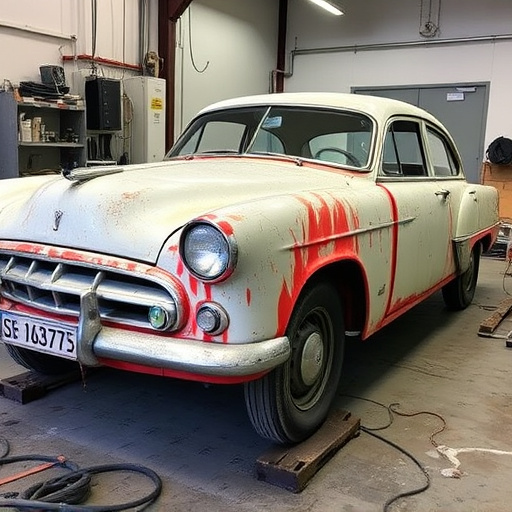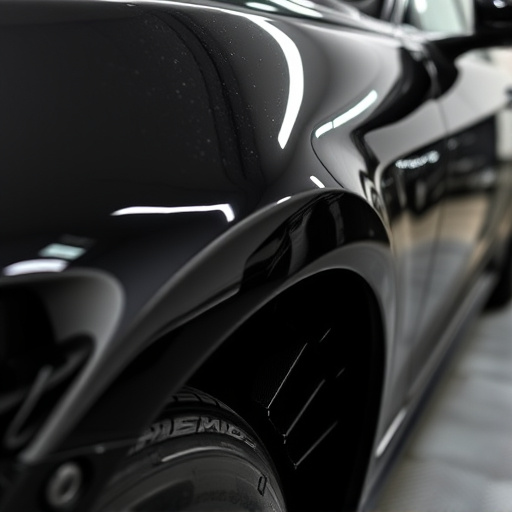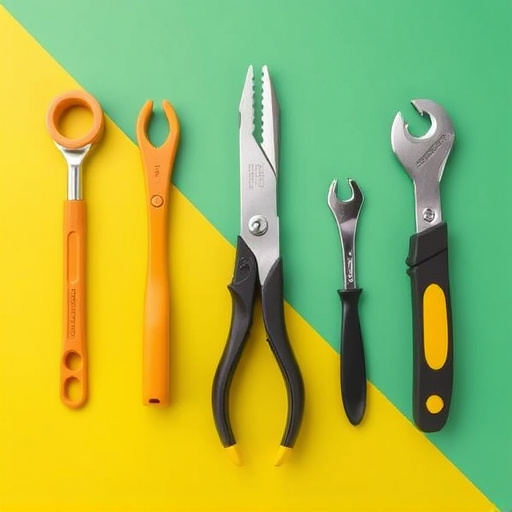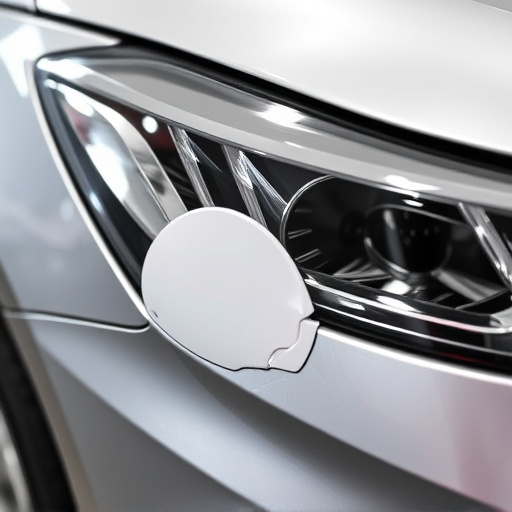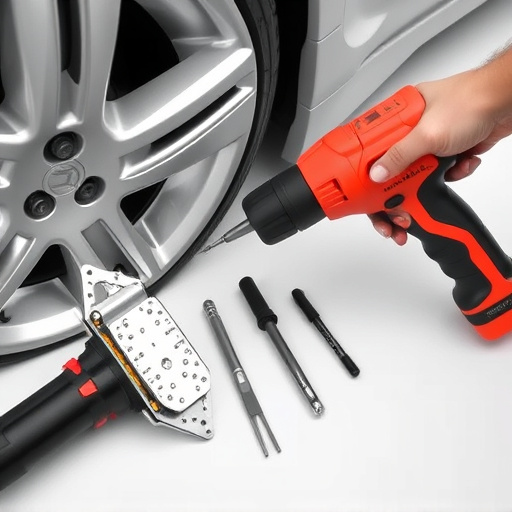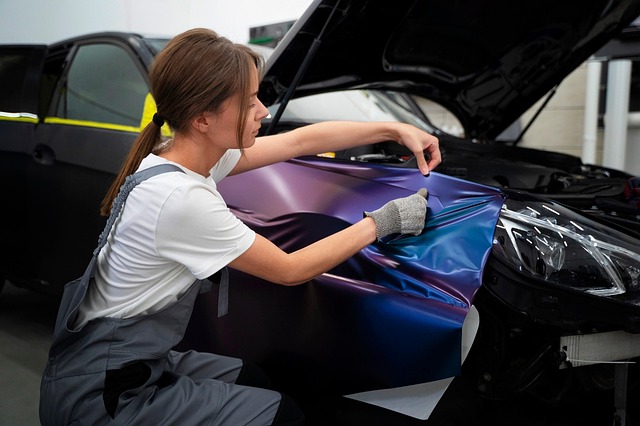Paintless dent repair (PDR) has advanced with specialized tools and training, making it efficient and cost-effective for various car damages, including complex cases. High-quality tools enhance precision, reduce waste, and minimize long-term costs. Initial PDR costs are higher due to equipment and skilled labor but can be competitive for repeated use in professional shops, offering quality without sacrificing economy for minor dents.
“In the realm of automotive aesthetics, paintless dent repair (PDR) has emerged as a game-changer, offering cost-effective solutions for damage restoration. This article delves into the tools that significantly influence PDR pricing. From technology advancements to tool quality and durability, each aspect plays a pivotal role in determining the final cost. We explore the delicate balance between labor expenses and equipment investment, providing insights for both professionals and enthusiasts looking to minimize paintless dent repair cost.”
- Technology Advancements in Paintless Dent Repair
- Impact of Tool Quality and Durability
- Cost Factors: Labor vs. Equipment Investment
Technology Advancements in Paintless Dent Repair

The field of paintless dent repair (PDR) has witnessed significant technological advancements in recent years, revolutionizing the way car damage repairs are carried out. Traditional methods often required extensive painting and body work, significantly impacting the paintless dent repair cost. However, modern PDR techniques have streamlined the process, making it more efficient and cost-effective.
Innovations like specialized tools, such as pneumatic dents pullers and plastic mallets, enable technicians to remove dents without damaging the paint or underlying structures. Advanced training programs and digital measurement tools further ensure precision, minimizing the need for excessive material replacement. Even in complex cases of mercedes benz collision repair or fender bender damage, these advancements have made PDR a viable option, offering substantial savings on car damage repair costs compared to traditional methods.
Impact of Tool Quality and Durability

The quality and durability of tools play a significant role in determining the cost of paintless dent repair (PDR). High-quality tools are designed to withstand rigorous use, ensuring they last longer and perform optimally. These tools often come with advanced features that enhance precision, making them more efficient for complex repairs. As a result, using top-tier tools can reduce the overall paintless dent repair cost by minimizing the need for frequent replacements and avoiding costly repairs for damaged equipment.
Automotive collision repair specialists understand that investing in robust tools is crucial for delivering quality fleet repair services. A durable set of PDR tools guarantees that car bodywork repairs are not only effective but also economical in the long term. By choosing well-made tools, professionals can streamline their processes, ensuring faster turnaround times and happier customers.
Cost Factors: Labor vs. Equipment Investment

The cost of paintless dent repair (PDR) can vary significantly based on a crucial factor: the ratio of labor to equipment investment. When comparing car body shop quotes, it’s important to understand that PDR involves specialized tools and trained technicians, which contribute to higher upfront costs compared to conventional methods. However, these expenses are not always indicative of the final price a customer will pay.
In many cases, the cost difference between PDR and other auto glass repair or car restoration techniques can be narrow, especially for minor dents. Advanced equipment, such as PDR hammers and pullers, requires an initial investment but proves invaluable for repeated use, potentially making it more cost-effective in the long run. This is particularly true for professional car body shops that perform numerous PDR services, allowing them to offer competitive prices without compromising quality.
In conclusion, several factors influence the cost of paintless dent repair, with technology advancements, tool quality, and investment in equipment playing pivotal roles. By understanding these elements, consumers can make informed decisions, ensuring they receive high-quality repairs at competitive prices. The right tools and techniques not only impact the efficiency of the repair process but also significantly affect the final cost, making it essential to choose professionals who prioritize both.
